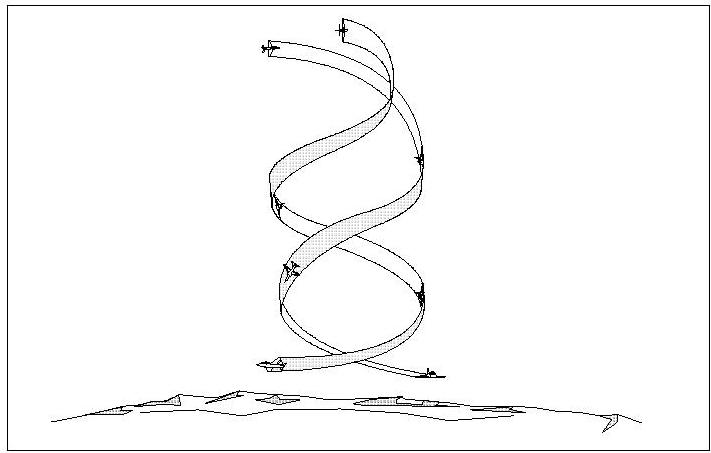Energy
Arguably the most basic fundamental principle of BFM. Energy is converted between different forms, and maintaining the upper hand in a dogfight often comes down to converting the energy of your aircraft efficiently between kinetic and potential.
One can think of the aircraft as a battery that stores energy.
- You can lose energy, such as in a tight, high angle of attack turn, where the energy is transfered to the air around the aircraft and cannot be recuperated.
- You can "recharge" your energy using the thrust provided by the engine. Increasing your speed and/or your altitude increases your energy state.
- You can convert the energy you do have between kinetic and potential.
Kinetic energy is essentially how fast you are going. If your speed is high, your kinetic energy is high. If you put a high speed aircraft into a climb, you are converting that kinetic into potential. You lose speed during the climb, but you also gain altitude.
Potential energy is the energy that is "stored" in the state of the aircraft. If you are at a high altitude, you have high potential energy, which can be converted into kinetic energy by putting the aircraft into a dive.
This conversion between kinetic and potential energy happens continuously during combat, but whenever this conversion happens, some of it is lost due to drag. Converting energy between kinetic and potential as efficiently as possible is crucial for maintaining superiority in BFM.
Remember:
| Low Speed | High Speed | |
|---|---|---|
| Low Altitude | Low Potential Low Kinetic |
Low Potential High Kinetic |
| High Altitude | High Potential Low Kinetic |
High Potential High Kinetic |
Basic Maneuvers
Split-S
The split-S involves inverting the aircraft and pulling back on the stick, to enter an inverted half loop. It is used as a defensive tactic, or to dive onto a lower target.
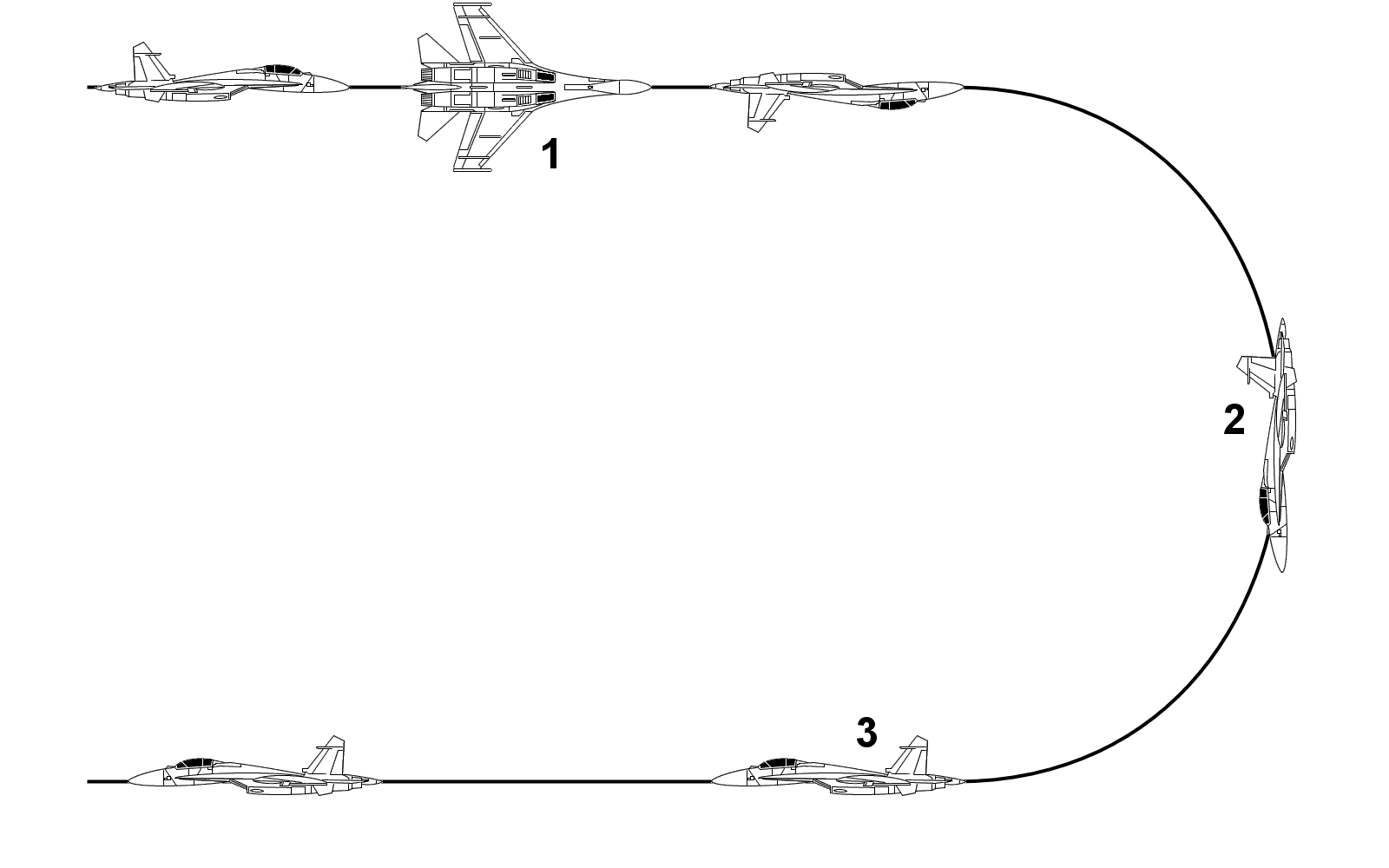
Immelmann
The opposite of a split-S. The pilot pulls back on the stick, climbs vertically into a half loop and then rolls the wings level. The Immelmann has many uses, e.g: To come back onto a target traveling in the opposite direction, while keeping energy high, to reverse the direction of travel, or while attacking a target of lower energy.

Low Yo-yo
The low yo-yo trades altitude for speed (potential energy for kinetic). The attacked dips the nose into the turn, increasing speed and closing the distance with the defender, before converting that speed back into altitude by pulling up under the target, and getting a gun solution.
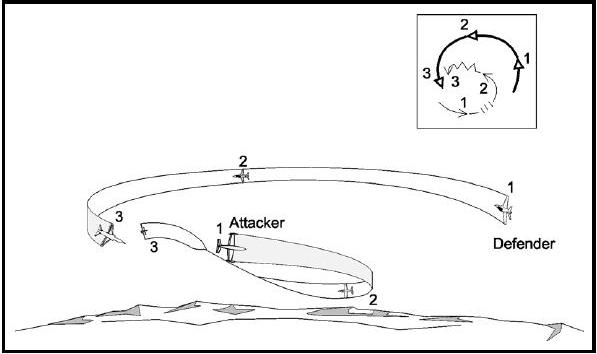
High Yo-yo
Contrary to the Low Yo-yo, the High Yo-yo is used to trade airspeed for altitude, allowing them to then trade it back, and come down on a tightly maneuvering defender. Instead of turning with the defender, which would bleed a lot of energy, the turn is made partically in the vertical, before rolling back down on the defender.
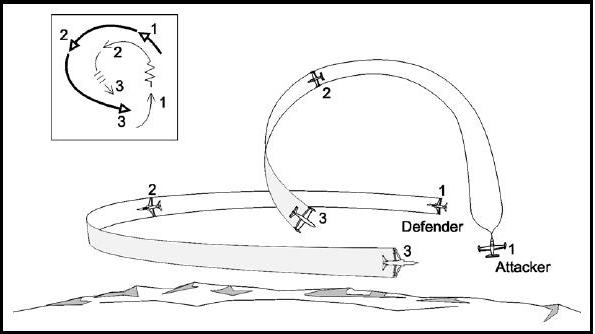
Lag roll
The lag roll is used to turn a lead pursuit into a pure or lag pursuit. Instead of turning with the defender, the attacker roles over the turn and pulls back in towards them.

Flat Scissors
Flat scissors occur when the attacker overshoots in the horizontal plane. The defender turns in to try and capitalise on the overshoot while the attacker reverses the turn to remain on the defender's six. This pattern alternates into a flat scissors.
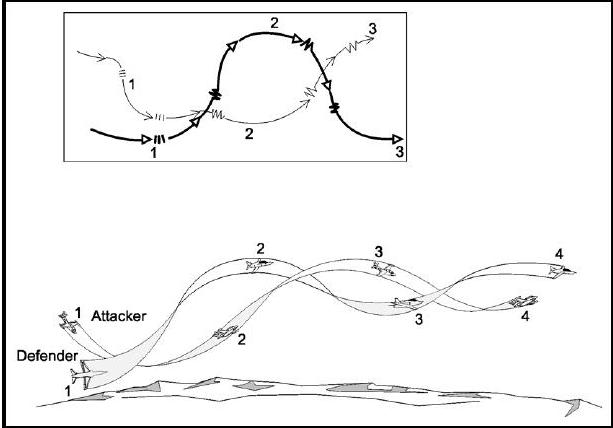
Rolling Scissors
Similar to the flat scissors but in 3 dimensions. Instead of flat weaving, the attacker and defender are barrel rolling. The defender often initiates the rolling scissors by pulling up into a barrel roll, forcing the attacker to follow. This continues until one aircraft is able to pull the nose up and gets a firing solution in the top or bottom of the turn, before the enemy.
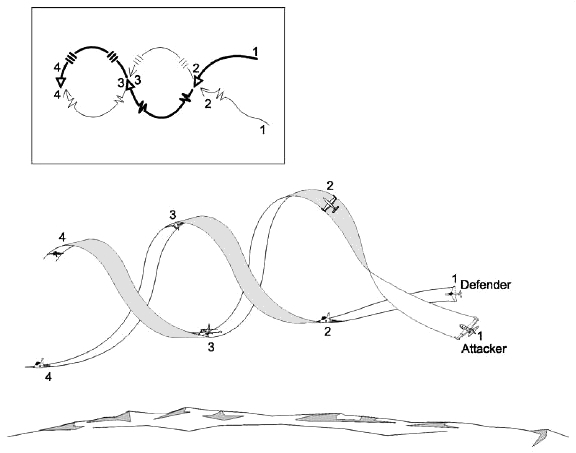
Spiral Dive
A defensive maneuver which is often performed when the defender is low speed, with not enough kinetic energy to defend effectively. Entering what is essentially a vertical rolling scissors, the defender will try and force an overshoot during the spiraling descent, or, hope that when they are forced to pull out of the spiral dive due to the terrain, the enemy crashes into it.
